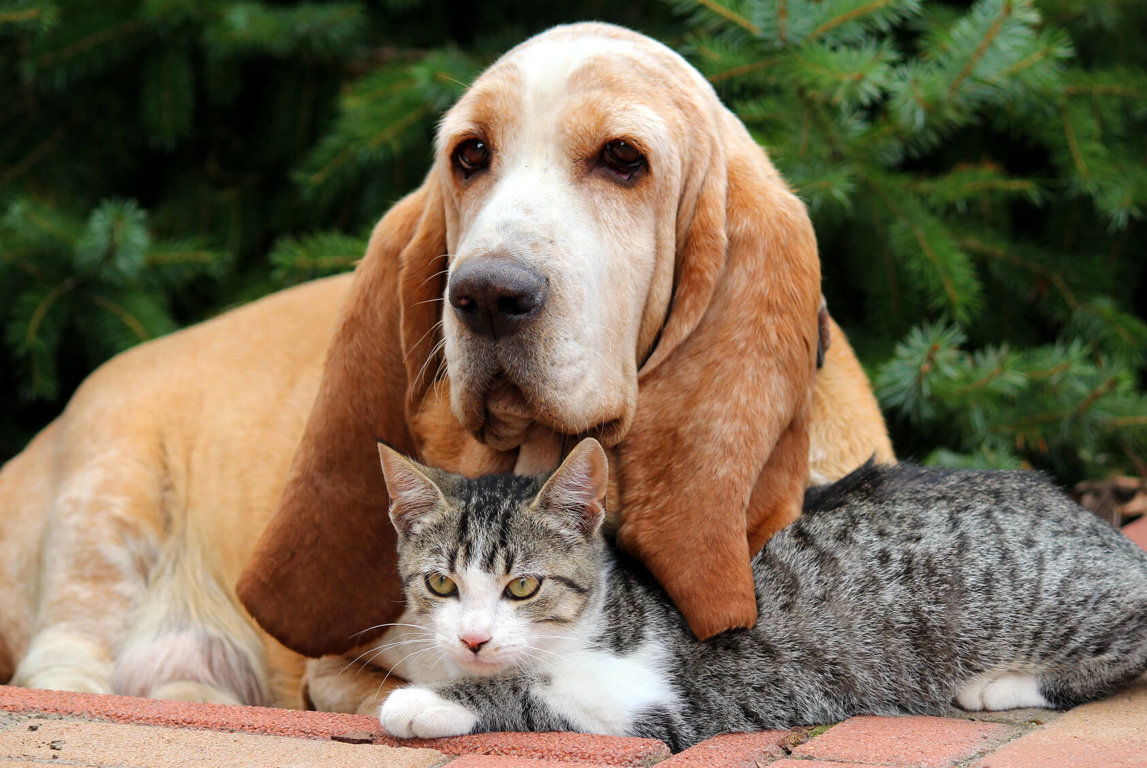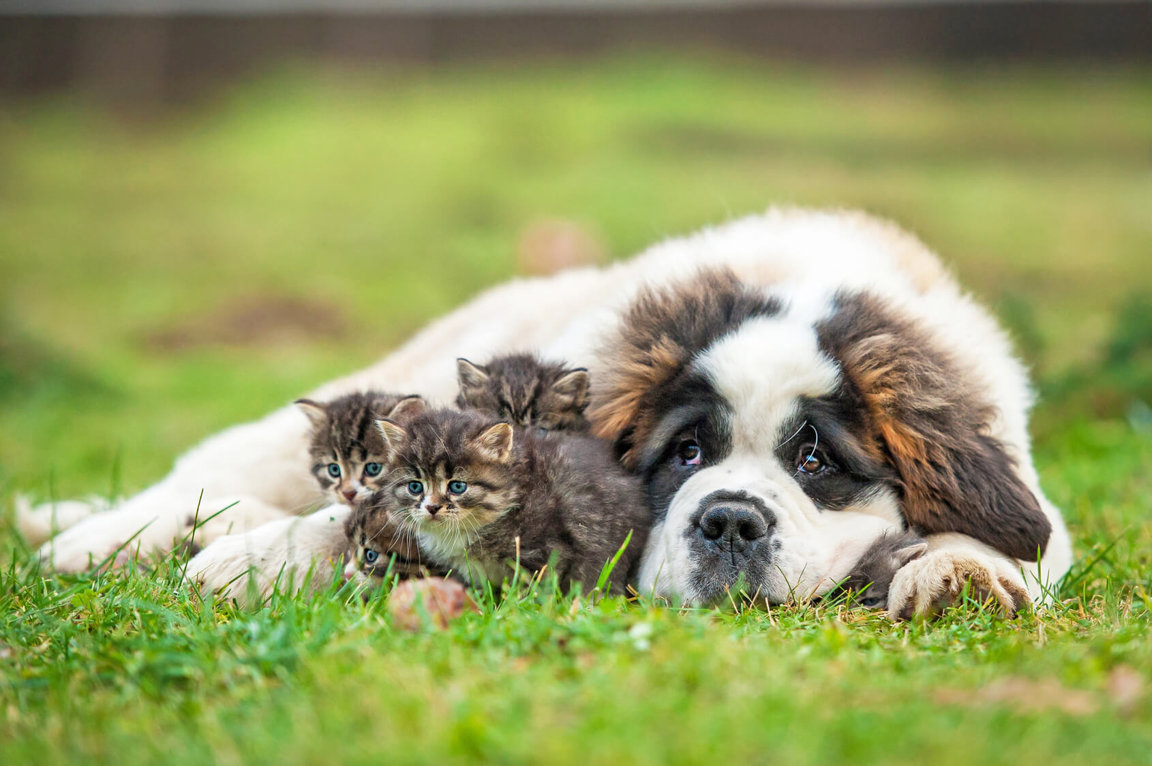
Animal Overpopulation Crisis
Each year, in the United States, 27 million cats and dogs are born. Around 4 million of these animals are euthanized because homes are unable to be found for them. It is a tragic end to these healthy young lives.
Overpopulation is a problem that results in thousands of animals being killed each month. There are many reasons for this; all are preventable. The answer to this huge problem is simple: reduce the number of animals coming into this world. Through the routine procedure of spaying and neutering dogs and cats, there would be fewer unwanted animals, thus reducing or eliminating the heartbreaking process of euthanizing innocent animals left in our overcrowded shelters.
One group of people cannot personally take the blame for this overpopulation epidemic since there are many contributors to the problem. The responsibility is shared by irresponsible guardians, pet shops, puppy mills and professional and "backyard" breeders. Just one litter of puppies or kittens can be responsible for reproducing thousands more in just a few years.
IRRESPONSIBLE CARETAKERS
While there are many breeders and pet shops, the greatest cause of the overpopulation tragedy is individual caretakers who refuse or are afraid to get their companion spayed or neutered. Sometimes parents want their children to experience "the miracle of birth"; other times people let their non-spayed/neutered animals wander, and their companion animals end up mating with other companion animals. There are also people who are genuinely uncomfortable having their companions neutered, "taking away their masculinity," which often results in accidental mating. All of these factors add up to many innocent lives that need to find homes.
PROFESSIONAL & BACKYARD BREEDERS
Another obvious contributor to the overpopulation problem are professional and "backyard" breeders. These people are contributors to a market driven by the same American ideals of buying brand name products because of the associations that go along with them; many purebred animals are bought for the same identification purposes. There is also a tendency for inbreeding in purebred animals because of certain desirable characteristics. This has led to problems, such as deafness, hip dysplasia and epilepsy.
Mixed-breed animals are not the only ones who end up in shelters. A surprising fact is that purebred dogs make up 20 percent to 25 percent of shelter populations. Sometimes a family that just wanted to breed one litter cannot find homes for all the puppies, or the pet store is unable to sell the animal. The bottom line is, each animal that is purchased from a pet store or breeder potentially takes up a home for an animal that could have been adopted from a shelter.
PET STORES & PUPPY MILLS
Puppy mills are facilities that mass breed dogs in almost assembly-line conditions, where dogs are considered nothing more than products. Puppy mills are able to survive because of the demand for purebred animals. The animals are usually kept in squalid conditions, with just enough subsistence to keep them alive until they can be sold at wholesale prices to pet stores. Many of these animals are prone to disease because of the horrid conditions they are raised in and the stress of being shipped over great distances at a very young age.
THE SIMPLE SOLUTION
Spaying and neutering are important steps toward ending companion animal overpopulation. They are simple surgical procedures that are done on the reproductive organs of female and male animals. The procedure eliminates the ability of the animal to reproduce and, in the long term, can prevent many difficulties, such as tumors or bacterial infections that can occur in older animals.
Animals should never be purchased from puppy mills, backyard breeders and pet shops. Adopt - never shop.
WHAT YOU CAN DO
Adopt animals from local animal care facilities, rescue groups and shelters instead of purchasing them from breeders or pet stores.
Have your companions spayed or neutered.
Educate your community, friends and family about companion-animal overpopulation.

Do The Right Thing: Spay & Neuter
For every puppy or kitten born, a puppy or kitten in a shelter or in the care of a rescue group will not find a forever home. There might have been time to prevent those unwanted births, if communities and individuals had acted responsibly.
Each year, in the United States alone, 27 million cats and dogs are born. Because homes cannot be found for all of them, between 10 and 12 million of these animals will be euthanized - healthy, lovable animals, destroyed just because there are too many of them. The only way to solve the problem is to reduce the numbers of unwanted animals by neutering and spaying. Attitudes must change and we should all share information. We should educate, encourage and speak out, until neutering and spaying cats and dogs becomes the norm.
It is human nature to rationalize the bad decisions we make, but can there ever be a good reason not to spay or neuter? There are parents who allow their cat or dog to have a litter because they want their children to experience "the miracle of birth". By making this decision, those parents have failed to teach their children the value of life. There may be people who are otherwise good animal caretakers, but who are genuinely uncomfortable with neutering. They may believe that they are "taking away the masculinity" of a companion. Unless this guardian is always vigilant, accidental mating can happen. But the worst excuse not to spay or neuter is one of money. There are low-cost options available. Call your local animal shelter for a list of providers of this service in your area or go online. If you can afford any extras beyond food, shelter and medicine, you can afford to spay or neuter. If you are too poor to spay or neuter, you are too poor to have a companion animal. Being a caretaker to a companion animal is a life-long responsibility and commitment. No one should have a cat or a dog if they cannot afford veterinary care. The only good reason not to spay or neuter is when the surgery would put the animal’s life at risk.
REDUCING FERAL CAT POPULATIONS
Feral cat colonies exist almost everywhere and their numbers are growing. The problem of feral cats can be directly laid at the doorstep of irresponsible animal guardians that do not spay or neuter and allow their cats to wander. Many of these cats never come back, giving birth in the wild and forming the colonies that struggle for survival, while producing litter after litter of kittens. Communities should establish Trap Neuter Release Programs to humanely trap feral cats, take them to be neutered, and then release them to the original site of the colony. If found early enough, kittens can be socialized and placed in homes. But again, each of these kittens rob another kitten of a home, so make certain that those you rescue now are the last kittens born to the colony. Trap, Neuter and Release all remaining adults.
FREE KITTENS
“Free kittens” signs mean that sweet innocents are at risk and that irresponsible animal guardians allowed their cat to breed. If you know anyone with a cat that is going to have kittens, encourage them to have the mother spayed as soon as the kittens are weaned and try to convince the person to find a no-kill shelter or rescue group willing to take the kittens. Let the person know that offering any animal for “free” invites disaster. There are people who are on the lookout for free food for "pet" snakes. And there are the awful "bunchers", who take free animals and sell them to laboratories for horrific experiments. Even if the animal is taken to be a companion, people often do not value something that costs them nothing. If no rescue group can take the kittens, it would be better to advertise them at a reasonable price, and do the best possible job of screening anyone wanting to adopt them. You can donate the money to a local animal shelter or charity.
KNOWLEDGE IS THE BEGINNING OF CHANGE
Knowledge is the beginning of change. Share with others what you learn about responsible and humane animal guardianship. You can save lives by helping to educate your community, friends and family about companion animal issues.
